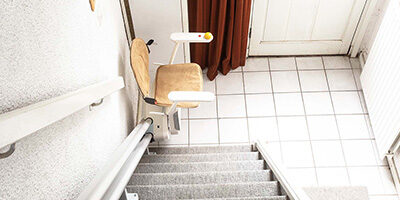Have you ever considered the deductibility of installing medically related home improvements? If you are adding some medically related home modifications this year, you should. According to the Social Security Administration, 10,000 baby boomers a day are reaching the age of 65. As of 2018, 16% of Americans were age 65 or older. And by 2030 all boomers will be at least 65. Boomers aren’t the only reason the nation’s overall population is aging. People are also living longer due partly to better health care. (More recently, deaths from COVID-19 have slightly lowered life expectancy projections.)
Eligible Types of Medically Related Home Improvements
The CDC has stated that falls are the leading cause of injuries among people age 65 and older. And nearly 30% of older adults reported falling at least once in the preceding 12 months. To help minimize falls, and to accommodate age-related infirmities, many people are modifying their home. Examples of this would include adding grab bars in showers, modifying stairways, widening hallways to accommodate a wheelchair. These and similar types of projects make the home safer and more accessible for older occupants. If you are planning to make such home improvements, you may be eligible to include the costs as a medical expense for income tax purposes.
Generally, the home improvements costs are not deductible. Except when those costs offset the gain made when the home is sold. HOWEVER, one can claim a medical expense deduction when the primary purpose of the home modification is for a medical reason. The tax law says that deductible medical expenses are those paid for the “diagnosis, cure, mitigation, treatment, or prevention of disease, and the costs for treatments affecting any part or function of the body.”
So, if you are making the modification because you, your spouse, or a dependent has a medical need for doing so, then the modification expense may be deductible as a medical expense. But only to the extent that it exceeds any resulting increase in the property’s value.
Examples of Medically Related Home Improvements
A doctor recommends that his patient with severe arthritis have daily hydrotherapy. The individual has a hot tub installed at a cost of $21,000. The individual then hires a certified home appraiser to determine how much the hot tub addition increased the home’s value. The appraiser concludes the increase is $20,000. The individual’s medical deduction for the year the hot tub is installed will be limited to $1,000 ($21,000 – $20,000). The other $20,000 of expenses will increase the home’s basis. This means that it will add to the home’s cost. And when the home is sold the deduction will offset the sales price.
While a prescription from a doctor isn’t required, documentation is important. The taxpayer, if questioned by the IRS, needs to be able to demonstrate proof of a medical benefit. That is, how the expenditure relates to their medical care, or that of a spouse or dependent. A letter from a doctor that explains the medically beneficial modifications would help prove a medical need.
Medically Related Home Improvements Where The Full Cost Is 100% Deductible
Not all improvements result in an increased home value. In fact, some, such as lowering cabinets for an occupant confined to a wheelchair, could actually decrease the home’s resale value.
The IRS has identified certain improvements that don’t usually increase a home’s value. However the following improvements are 100% deductible as a medical expense:
- Constructing entrance or exit ramps for the home;
- Widening doorways at entrances or exits to the home;
- Widening or otherwise modifying hallways and interior doorways;
- Installing railings, support bars, or other modifications;
- Lowering or modifying kitchen cabinets and equipment;
- Moving or modifying electrical outlets and fixtures;
- Installing porch lifts and other forms of lifts (but generally not elevators);
- Modifying fire alarms, smoke detectors, and other warning systems;
- Modifying stairways;
- Adding handrails or grab bars anywhere (whether or not in bathrooms);
- Modifying hardware on doors;
- Modifying areas in front of entrance and exit doorways; and
- Grading the ground to provide access to the residence.
Costs to accommodate a home must be reasonable. Additional costs for personal preferences are not medical expenses. These include architectural or aesthetic changes.
Limits to Medical Expenses That Exceed The AGI
Unfortunately, the total of all medical expenses can be deducted only to the extent that they exceed 7.5% of the taxpayer’s adjusted gross income (AGI) And costs can only be deducted if the taxpayer itemizes on their return. Currently, fewer than 15% of taxpayers itemize their deductions. This is down from 30% of taxpayers itemizing in 2018 and earlier. (Standard deduction amounts changed in 2018.) What this means is that even if one makes a medically needed home improvement, only a small percentage of taxpayers will end up with a tax benefit as a result of the expenditure.
But it’s not all bad news. Improvement costs, including those that don’t meet the “medically necessary standard”, can be added to the home’s purchase cost to determine the home’s tax basis. Thus, the capital gain will be lower when the home sells.
Regardless of the reason, taxpayers should keep all records of the home improvements they make. This means keeping all the receipts for costs incurred for the improvements.
Questions related to this deduction and whether you or not you will benefit, tax-wise, from any medically related home modifications? Please give us a call.


 What’s Forthcoming For The Child Tax Credit?
What’s Forthcoming For The Child Tax Credit?